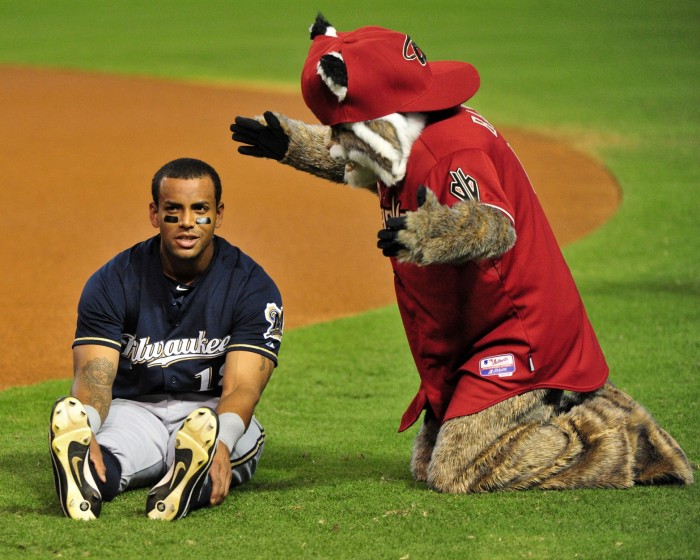The platoon advantage is a well-accepted baseball truism. Teams try to arrange their lineups and manage their substitutions so that they can have right-handed hitters face left-handed pitchers, and vice versa. Oakland became famous in 2012 when its shocking run to the playoffs was significantly aided by a masterful use of platoons.
Milwaukee does not utilize platoons in any significant way. The Brewers had seven regulars (before Aramis Ramirez was traded) who got nearly all of the playing time at their respective positions, with the one split being the Gerardo Parra/Khris Davis combination. Even that was only introduced because of Davis’ injury and is likely to end when Parra is traded by the deadline. Every other bench player other than backup catcher Martin Maldonado has fewer than 150 plate appearances.
Such a pattern is interesting for two reasons. First, the Brewers are better against right-handed pitching than they are against left-handed pitching. They have a .711 OPS against righties and just a .665 mark against lefties. Given their relatively set lineup, this number is actually a bit confusing. Adam Lind and Scooter Gennett are the only lefties in the everyday lineup, so we would have expected the numerous righties to pound lefties. Clearly, though, they have not done so.
It is this aspect of the team’s struggles that is most compelling. Their lineup is loaded with quality right-handed hitters. Carlos Gomez, Jonathan Lucroy, and Ryan Braun each have long track records of offensive success, and Khris Davis and Jean Segura have each had very small platoon splits (see Davis here and Segura here) over the course of their career. And given that Aramis Ramirez was on the team until recently, his history of productivity is also relevant to this story.
So what exactly is happening here? Significant offensive platoon splits are actually more common than I expected to find. The Brewers rank 27th in team wRC+ as right-handed hitters versus left-handed pitchers and tenth as left-handed hitters versus right-handed pitchers. Of the three teams both above and below them in the first statistic, the Nationals (29th and second) and Rangers (24th and fourth) actually have bigger gaps, and the Rockies (26th and 11th) are similar.
The problem, though, is that those teams have different lineup constructions. Of all Nationals with at least 200 plate appearances, four of the five best hitters by TAv are left-handed. In Texas, each of the top three hitters with at least 200 plate appearances is left-handed. And for Colorado, two of their top three hitters are left-handed.
But three of Milwaukee’s top five hitters are right-handed. Ryan Braun, Carlos Gomez, and Khris Davis have each been solid at the plate, so it’s not as if Lind and Gerardo Parra have been the only ones producing. Each of the three right-handers has a TAv above .260.
There are no real conclusions to be drawn. There are all sorts of confounding variables at play here. If Lind and Parra weren’t hitting very well (each has been better against righties), I think we would just be talking about an underperforming offense instead of one with weird splits. Realistically, the Brewers have a talented lineup, and they have suffered from a few righties having down years against lefties. Carlos Gomez, Khris Davis, and Jonathan Lucroy have each put up below-average numbers against southpaws, although in admittedly small sample sizes. Of those three, Gomez’s 67 plate appearances is the most.
Realistically, this is likely not much more than some random fluctuation. But it is fun to keep track of and follow, and it is remarkable enough to be noteworthy. It will be interesting to see how the Brewers’ performance changes against southpaws if Parra is indeed traded and replaced full-time with the right-handed Davis.
